My Declaration of 400 Mile Independence and the case for the need of a 400 mile range electric car. Why cars like Tesla Model 3, Model S and Nissan Leaf should have at least 400 mile range.
- Frederic Lambert, Editor in Chief of Electrek, wrote this article “Tesla Will Soon Have a 400-mile Car and You Don’t Need It.”
- There’s a reason why Elon wants to make a 400 mile car and boast about it, and rightfully so.
- With Tesla’s new S/X refresh we’ll see upgrades that’ll keep them competitive with both Porsche and Rivian, for now their most likely intense competitors.
- Upgrades include a tri-motor platform with a tray layout that yields up to 400+ miles of range for an additional charge.
- Rivian is about to offer their two vehicles in an ala carte menu of quad motors with battery performances up to a 400+ mile range option.
- Don’t forget next year the Tesla Roadster 2 will come with a 600 mile range, the same amount mind you, as a passenger diesel on average.
- Most likely, a high range BEV will either be an SUV or luxury feature, or both together, like fast charging capability.
- To be fair to Frederic, he does give advantages to longer range BEVs.
- But when he does this he drives me crazy!
This was Frederic:
“200 miles of range is more than enough for well over 95% of the population, especially when combined with expansive quick charging networks like Tesla’s superchargers. There are maybe some extreme use cases, like people who do a lot of mileage and long-distances for business, who really need more than that.
But as the charging infrastructure grows and fast-charging capacity increases, long ranges on single charges become less relevant.
The vast majority of trips in North America are less than 30 miles and for the very rare occasions that the average driver travels more than 200 miles in a single day, they generally take breaks (to eat, drink, or other things), which gives opportunities to charge.”
1. First of all, who is Frederic to decide what’s best for the electric car magazine reading public? He constantly does this to my annoyance, as much as I respect him, I do. Boy did he get a handful in the comment’s section. There’s a reason why Tesla and Rivian are offering different options of different ranges. Remember the old EPA saying about mileage per gas gallon: “your mileage may vary?” So it is with electrics.
2. What’s the big hoopla of offering 400+ miles of range? For most cars you most likely for now don’t have to buy them exclusively!
3. We need to shut the perpetual “range anxiety” people up. These are the same people clinging to their hybrids thinking that Exxon/Mobil will have chargers available nationwide someday soon. They can keep their hybrids while they keep dreaming. By making an electric car that has about the same range as an appropriate counterpart gas vehicle, 400 milers should have plenty of mileage, time, and options to “refuel.” A paltry 200 mile car short of a commuter won’t cut it.
4. Stated range usually means less in reality. When a manufacturer says 230 mile range that actually means for you ideally 200 miles, as the car gets older, 175 miles, especially the way the average American car owner keeps his car at 10 years, most likely with electrics, 15 years. When my readers see range they often forget this that they argue this with me, that 200 +/- miles is fine. For a vehicle especially an SUV designed to go off grid off road in remote areas for prolonged periods, it is not.
Unlike the way you’re used to drive gasoline, you can no longer “drive on fumes” with electric. The mileage these manufactures are posting are as if you’re driving like an old lady on Sunday that most of us don’t drive that way. Instill this in teenagers and young adults in the household as they absorb electric driving. You should always leave a 25+ mile cushion to recharge in case of an electrical short/something left on, foul weather, emergency, etc. And in extreme weather expect to lose anywhere around 60% of that charge at full charge.
This is where I do battle with the iPace, e-Tron, and Mercedes EQC people that a 230+ mile range for a big SUV is inappropriate and for these reasons. I heard a handful from disappointed Jaguar drivers over the winter about how most of their full charge dissipated in the dead of winter into the start of their drive when they least expected or frankly, least needed for that to happen. These wagons are heavy in weight as they are. You just matter as well make them even heavier as appropriate to get the ranges they really need. They weren’t made to go fast or be nimble like sports cars anyway. In fact they’re supposed to be driven and treated like trucks that they are, that most don’t. Remember, the gas versions have 30 gallon gas tanks and for some, an extra portable tank strapped to the back. That’s the kind of driving they were really made for.
5. A case for the bigger battery. The bigger the battery, the longer its range, the longer it’ll take to overheat or freeze, the more reliable the pack it’ll be, and the longer it’ll last in longevity. There’s more pack for the car to work with, which is one of the reasons why long range electric car batteries last so long. Though they’re not ion, this is the same principle and reason why some of the nickel batteries inside some of the 100 year old Brass Era electrics in collections and museums, many of them with 80 mile ranges which was considered a lot at the time, are still running strong.
6. A case against the smaller battery. Like a PHEV, Prius, and LEAF battery, the smaller the battery the quicker it’ll take to freeze or overheat, the shorter its range will be in hot or colder climes. When running at charging or highway speed the quicker amount of time it’ll eventually run constantly hot, thus the shorter the longevity it’ll have. There’s less ion battery in the pack for the system to work with. This is where I’m baffled at Frederic’s proclamation. He should know better as judging from his Tesla Model 3 freezing door handle story he lives in a cold part of the country.
7. With a 400 mile range BEV those pesty smog producing, non-zero emissions PHEVs are no longer needed. They aren’t and if you knew anything about their history and their original purpose you wouldn’t argue with me about this, as I’m getting tired of arguing this with any of you that most don’t read into history. There’s a reason why Europe is banning these cars as well as ICE. They are temporary transitional vehicles we don’t need anymore, at least as passenger vehicles. In fact if you live in a remote area I discuss below, your situation is better suited for a longer range BEV. Some of you cling onto a technology that works for you to not open your minds to something that might come along that’s better for you. I can’t reason with you folks who do that: “well it works for me.” God bless you caveman! There’s a reason it’s called mass production, otherwise Bentley of all people are about to make great hybrids we don’t need. Maybe the rich do! They’ll be the only ones left selling hybrids. Even Toyota is smelling the coffee!
8. Remote areas. Out west there are 11 states where the average distance between each public charger is 80 miles. Frederic needs to tell these people outside of the home or office base where else to charge with only 200 miles of range. A 400+ mile long range BEV is perfect for this region, in fact now even better than ideal that any hybrid could ever offer.
9. Long distance driving. You can tell Frederic doesn’t do any long distance driving. If you do a lot of long distance driving, in fact if you do little long distance driving even only twice a year on your semi annual vacations to the lodge or lake, you’ll regret getting a BEV with only 200 miles of range. Trust me.
10. No home/office base. What about the apartment dwellers and ancient homes/buildings with old electricals that don’t have a home/office base? That 400 mile ranger will come awfully handy.
11. How about the urban/suburban point to point all day driver who won’t have time to recharge all day? There’s plenty of you people I know in my home area of SoCal and you peeps, my peeps, need to speak up!
12. Charging dynamic. We need to get used to the charging dynamic not being anything closely remote to the gas dynamic. You need to take out your phone and use an app for that and make an appointment to charge. Depending how quickly the proliferation goes, we might even see long lines at public chargers, that I hope not. But you know the cop in me, I hope for the best, but prepare for the worst. So should you. A charger will not always be around the corner when we want them to be like gas. It’ll take a while and most likely not in most of our lifetimes we’ll see anything close to that. So until then, its awfully nice to have an electric car that we can drive away without worrying about recharging every 200 miles.
13. Power outages. Rolling blackouts are become the norm because of our horrible infrastructure of a power grid. And with electric car proliferation we should expect it to get worse before getting any better whenever they rebuild it, if they ever do. Until then having a 200 mile range car does not help when you need to get home or to a public charger and there’s a brown/black out. Having a 400 mile range car not only means that if you’re prudent with recharging you have a better chance to outlive a brownout instead of grounding your depleted car, you just might have extra energy to light up your house to see what fold/crack of your body you’re cleaning while you’re in the bath tub bathing yourself; get it?
14. Disaster/catastrophe/apocalypse. Closely related to the previous, but given its own category because when you’re dealing with something like that, the last thing on your goddamned mind is charging your 200 mile ranged car okay? You want to get the hell out of the way, and if 400 miles is your range, you’ll want to worry about recharging elsewhere. Whatever.
Watch Elon Musk Speaking of Tesla Model 3's Trade-in Potential and Subscribe to Torque News Youtube Channel for Daily News on Tesla and Auto Industry.
Do you folks now understand how important it is we have 400+ mile range electric cars? Someone please explain this to my dear colleague Frederic. I haven’t met the man, not yet, and I eagerly do one day, as I sincerely respect him as a trail blazer in this field, but he’s chopping off the electric car movement by doing this “what they give you is enough” thinking. Don’t short change yourself with ancient technology, and with the new tech, don’t be modest. Like it is when we think big and bold as a country, we need to do the same sometimes with our personal choices, so as long as they don’t take us to bankruptcy court. This is how we became a superpower, and did things like go to the moon. We need to have the same approach when it comes to autonomobility and electromobility as well.
In the spirit of the Continental Congress that got us here to debate these issues to begin with, I wish you all ahead of time a Happy Independence Day!
Photo Credit: Twitter User Vincent, who has generously allowed us to use his materials in the past.
Wow!! See what I found in here people
Tesla Semi + Roadster 2 + Model Y$TSLA #Tesla #TeslaSemi #Roadster2 #ModelY pic.twitter.com/8vfiMd8Auk— Vincent (@vincent13031925) June 11, 2019
I am so grateful Hareyan Publishing allows me the generous privilege within reason to express my opinions about matters related to the auto industry. I try to be judicious and respectful about the content. I ask you do the same in the comments section by refraining from inappropriate language and content. Please be nice, this is only about cars.
And please keep in mind that the opinions expressed here are solely mine, and not those of Hareyan Publishing or its employees, which include my staff colleagues. By the way new Easter Eggs games are coming to Tesla, reports Torque News Tesla reporter Brian Jenkins.
Al Castro reports EV and autonomous news for Torque News. Please follow Al on Twitter at @SgtAlCastro, Facebook and Linkedin and send him tips for new stories.



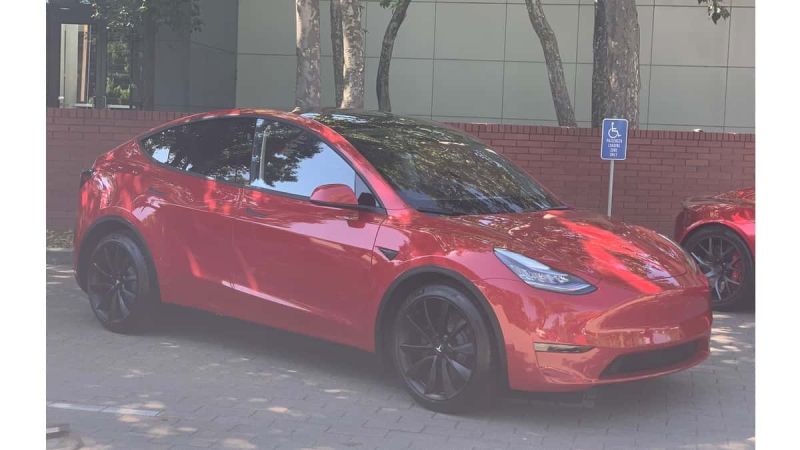




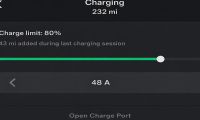
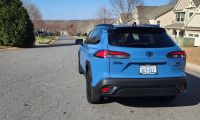
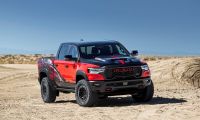
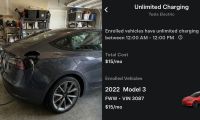

Comments
You make valid points about
Permalink
You make valid points about the various need for 400 miles EV range for SOME people, but I believe that they are the minority of EV buyers. I think it is similar to people NEEDING to have over 500HP, or getting over 50MPG in a gas car. A few buyers actually need that capability, but mostly it's chief value for many will be for boasting, and basking in the comfort of simply having more of a range buffer. The points that your downplayed are that more range usually means both more weight and more cost. Still, I do agree that Tesla absolutely NEEDS to offer 400+ mile range capable models, for those few people who have those extra range requirements for various reasons. Many will be attracted to having maximum range for pure status reasons, and especially Tesla needs it because the BEV competition is starting to heat up, and Tesla needs to be seen as being ahead of the curve. I think that ultimately their sales numbers will reveal how many buyers choose the lower range models to save on cost, and how many are willing to pay top dollar for the most range capability and performance.
Since ANYONE can be in the
Permalink
In reply to You make valid points about by DeanMcManis (not verified)
Since ANYONE can be in the middle of a blackout, a disaster, remote area, apartment building, etc., a 400 mile car applies to EVERYONE. But I didn’t say all need to buy. It should be standard on all top tier all terrain SUVs like Range Rover Jeep and Rivian, and available for all that can afford the car it’s offered in. As far as size and weight it depends on the vehicle in other cases. I can see a sports or commuter car, whats the difference if an SUV is already over two tons? It’s a truck anyway! Plus tech is taking care of that already reducing battery size and weight. The mere fact that Elon is launching it and boasting about it as well as Porsche and Rivian with their ranges, clearly shows there’s a strong demand... My arguments, all of them, still stand. ;)
Please note that I did not
Permalink
Please note that I did not refute any of your points justifying the NEED for having 400+ miles of EV range, but I have got to wonder if "apocalypse" is the argument that you want to lead with, outside of the survivalist crowd. No, the number one reason for having 400+ miles of EV range is technological superiority, and boasting rights. Does the Dodge Hellcat Redeye really NEED to have 800HP? No. Does the Koenigsegg Jesko NEED to go 300MPH? No. (don't get me started on the impracticality of Top speed). But in the automotive industry, where rumors and status can translate into profit and loss, especially with BEVs that represent a brighter, technologically advanced future, having more range than the other guy makes headlines and sells cars. Your best points for wanting a longer range BEV are for those people who cannot charge at home, have range anxiety, have long cold winters, regularly drive hundreds of miles a day, and/or live in a remote location. Extra weight and cost affects all vehicles, but hopefully Tesla has made some advances in their batteries, electronics and motors to gain this extra range with a minimal hit on cost and weight. Tesla caught the world's attention when they built a family sedan that was quicker 0-60 than most supercars, and they are looking to extend the image of superior performance with the upcoming next-gen Tesla Roadster. And similarly they want to be seen as a leader in EV range.
Ah Dean, so good to have you
Permalink
In reply to Please note that I did not by DeanMcManis (not verified)
Ah Dean, so good to have you back. My biggest point is that 200 miles for an electric shortmof a commuter car is insufficient, and electrics should have the same range as ICE and especially for all terrain SUVs. And 400+ miles should be for everyone but not everyone should be forced to buy it. That’s all. Just sayin. Hope all is well with you it’s been a while. My podcast is launching in a few weeks it’d be nice to have you as a viewer.
One can always make the case
Permalink
One can always make the case for more miles. Once we get 400 mile EV's there will be reasons to get a 500 Mile EV. I can see the articles being written now :-)
Fred is simply stating that 200 miles is the minimum you need. Once you meet the minimum anything else above that is simply nice to have. Its always nice to have more, there is always an edge case the extra will accommodate.
I drove a 73 mile LEAF for 7 years. My Model 3 doesn't go below 200 miles very often and I only charge to 80%. So now I have "in reserve" 3 times what I could achieve at 100% charge with my LEAF.
Would it be "nice" to have more. Sure. Do I need it? Heck no.
No that’s not what Fred is
Permalink
In reply to One can always make the case by Jean-Pierre White (not verified)
No that’s not what Fred is saying and he’s stated what he did on numerous occasions. When Fred Lambert writes I don’t need a 400 mile car that means he means I don’t need a 400 mile car. Period. Please stop defending him and let’s keep this real with no pretense or punches. He clearly stated more than once that 200+ mile ranged electric cars are “enough” or “plenty.” For a lot of people short of a commuter car and especially for an SUV this is woefully insufficient. It is what it is. Just sayin.
As a California driver of a
Permalink
As a California driver of a Leaf for the past 8.5 years (74K miles), I can say there is almost no need for a 400 mile BEV. I almost never charge on the road and I can only go 65 miles. I am one of the 80% of people who live in a city/suburbs where the average person drives 37 miles/day. One of the aspects of EV ownership that seems to get lost in all the range and charging station talk is that EV's are not used like ICE vehicles, but like cell phones. Use them during the day, charge them at night, use them during the day, charge them at night, etc, etc. It's a paradigm shift, but means that charging on the road isn't needed very often. Sure, there will those who "need" a 400 mile range, but if you don't use it very often, you paid $50K for your battery that goes unused most of the time.
Ah as I wrote that’s you and
Permalink
In reply to As a California driver of a by gery katona (not verified)
Ah as I wrote that I hope you read carefully, that’s you and you’re not the end all. Because of your LEAF success that doesn’t mean the same for everyone else. Extreme weather is another consideration. It’s also called mass production and they need to sell to the masses. Please tell this to a Montanan an Idahoan or a Utahan who complain to me they’re concerned about electric car proliferation as extreme weather and 80 miles between chargers is scary, and frankly it is. Nobody should have constantly recharge or refuel unless you drive a Rolls Royce okay?
As a New Jersey commuter, my
Permalink
In reply to As a California driver of a by gery katona (not verified)
As a New Jersey commuter, my absolute best-case round-trip for work is 70 miles. My old office, which I visit once in a while, requires a least 120+ mile round trip. Strange? Not here. Many people in our part of the state have a daily commute much higher than the oft-quoted 37 miles/day average. Now, couple that with months of cold weather. At some point, we all encounter noreasters with 60+ mph winds and/or snow/sleet/ice accumulating faster than your wipers can displace it. And every year, drivers end up stuck in the vehicles as roads are shut down because of weather. I'm seriously wondering if getting a BEV with a rated range under 250miles even makes sense FOR ME. Do I max-charge the battery daily during the winter months knowing it would negatively affect the overall battery life?
400 miles is not bad, but it
Permalink
400 miles is not bad, but it would be better to have even more than that. Range and battery lifespan are the big targets. After that reduce battery pack mass (by a lot). Then we'll have something really admirable.
Some years ago a well qualified and very experienced engineer wrote that a regular car for daily use (that is, a non-specialty car) had its utility improved by increasing its range- the more the better. He explained that this was properly achieved by improving the car's efficiency overall so long as the approach employed did not increase the cost of ownership or demand extra time, effort or care in maintaining and operating the car on the part of the owner.
I have run an electric car and it is a fun vehicle to have around. Being honest, it has about the same utility as my track-day car (and similar low-speed accelerative performance but nowhere near the braking, road-holding and handling, especially on limit). Both cars are roadworthy and both have major issues and compromises which demand special attention from the owner. Hence they each have reduced utility when compared to regular daily driver type work cars. These two are fun cars, but the fun comes with a cost in time and hassle (not that one ought to worry about this for hobby cars).
Sorry guys, but until 1,000 miles (at the very least), is the range from an electric vehicle, then there is no way you can get anywhere near the utility of, say, an old '90s Peugeot diesel fitted with the "Africa" fuel tank (range is 1,020 miles driven gently, although not unusually so). Even the regular version of that car with a standard size fuel tank routinely gets to 700 miles range. For me that is well over a month driving. Here is the rub, fueling up again takes mere minutes. Then I don't have to think about it again for weeks and weeks. I just go wherever I want and don't have to consider the car's energy needs until the orange low fuel warning light illuminates. At that point there is still some 60 miles travel available before I ought to do something 'bout it.
So, no need to be forced to regularly schedule time to hang around some charging place "having coffee", waiting, waiting, waiting for an extended period when you ought to be doing something else and could be if you weren't tethered to the car just as surely as it is tethered to that fugly charging post thing (and why do you Yanks rave on about having a such coffees when you are being forced to to stop for a recharge as if it is such a great thing to do. It isn't. It's a chore and a pain to endure. It isn't enjoyable at all. You are wasting time. Also, US coffee and eat-out food is often vile, just nauseatingly bad for human health....don't even mention the taste of it......).
So, to put up with the tedious chore of oh so slow recharge hassles at limited availability recharging locations it is important to minimise how often that needs to be done. Give the car some decent range. Give it what it hasn't got. 1,000 miles is the target. Recharge once a month at most.
Now 1,000 miles is not a range that most cars have got presently, but it is the target to aim at. Here is why...
Utility.
Im going to keep it short. If
Permalink
Im going to keep it short. If I am going to buy an EV car, I agreed 400+ range is preferrable, I live in an apartment building and have no access to power outlet in the building garage. I wouldn't want to stop by the charging station every 2 weeks to charge the car.